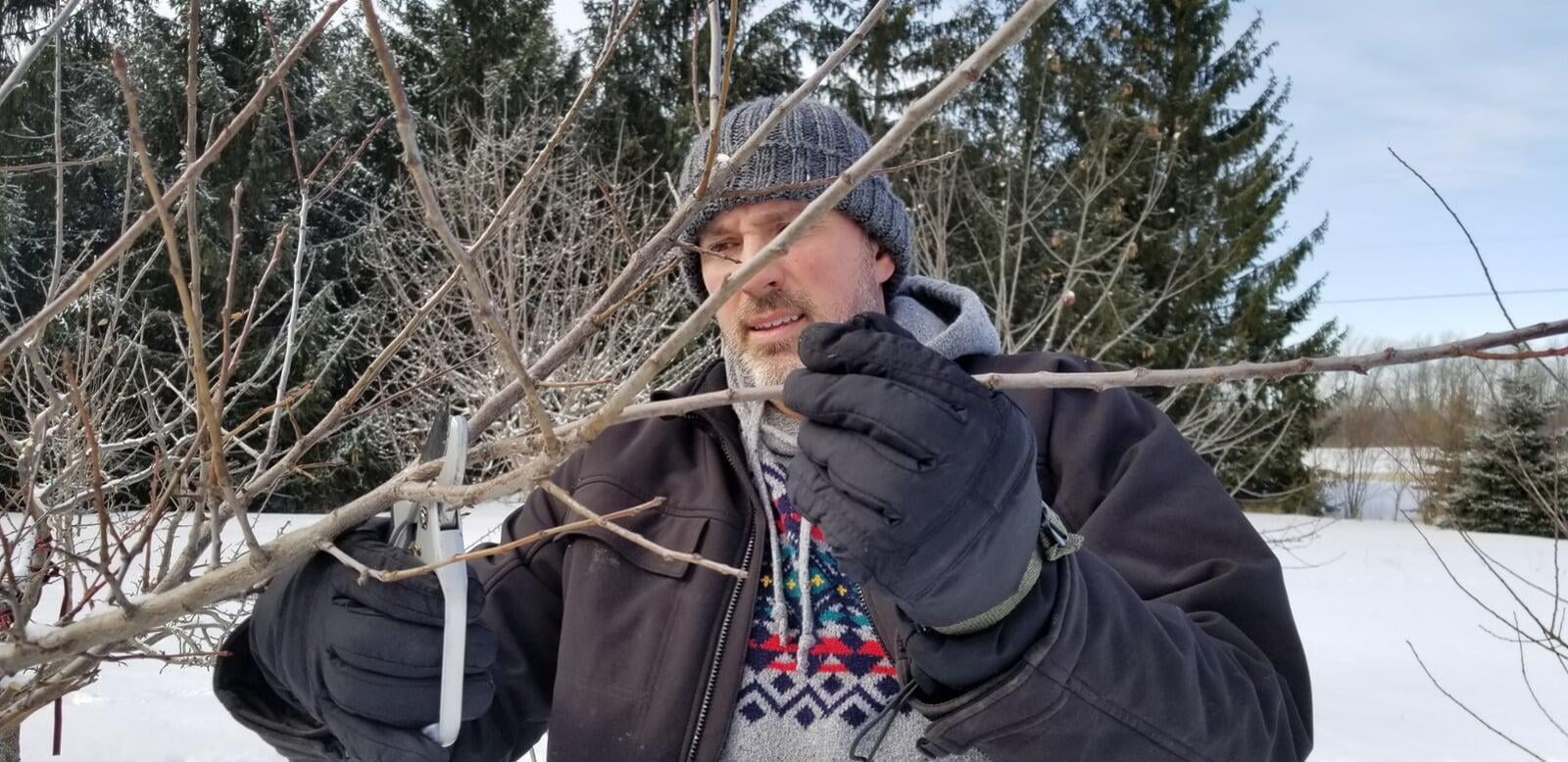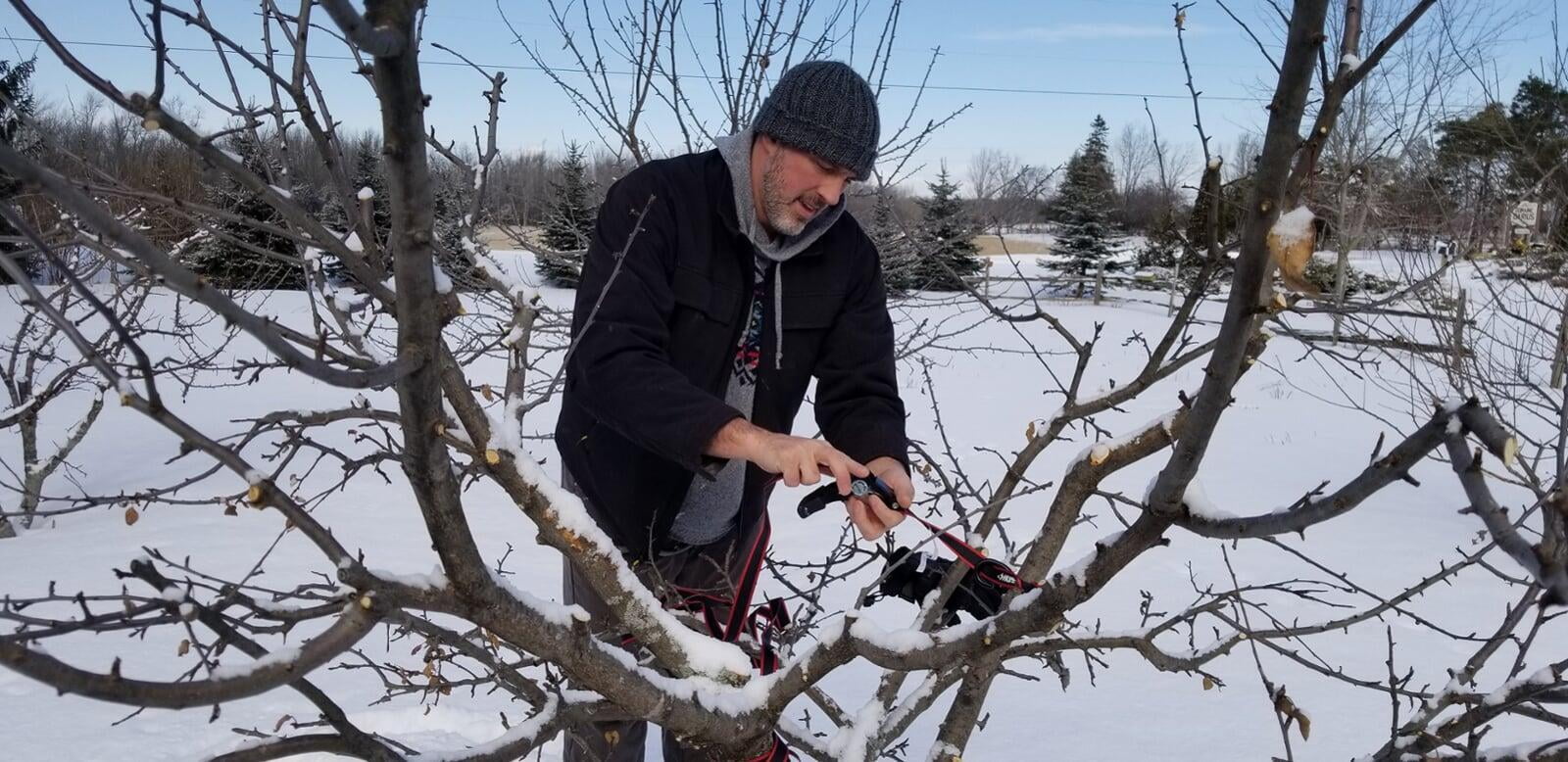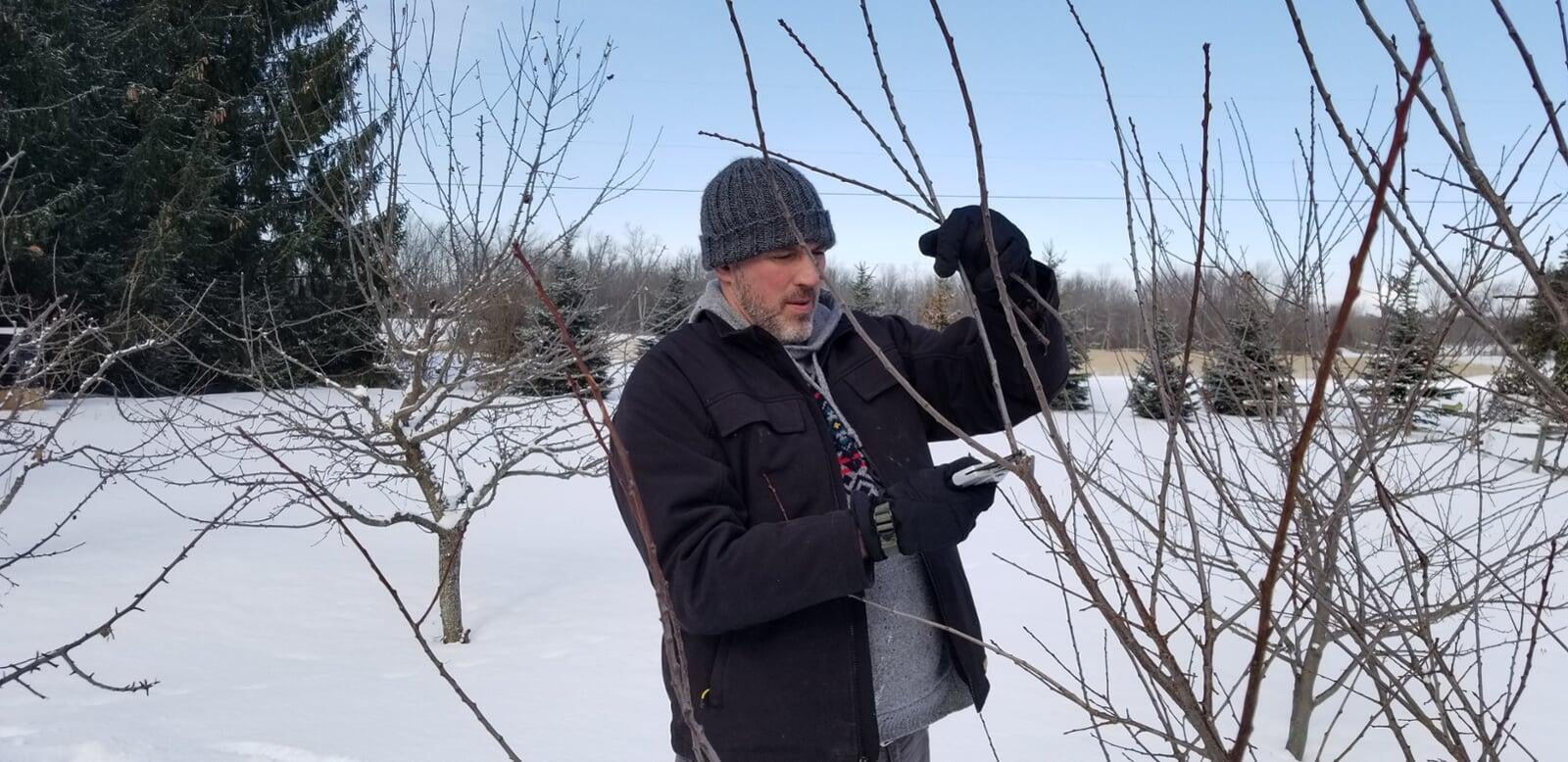Bundle up...it's time to prune your fruit trees
Its officially time to prune your fruit trees! I know it seems like an odd time to be pruning your apple, pear, plum, peaches, cherries (and any fruit trees I may have missed) but the deep part of winter is the perfect time to start trimming. The reason...if you prune a fruit bearing tree when it's not dormant, the tree immediately sends growth hormones to that area to replace what was lost. Unfortunately, the new growth is in the form of suckers which are canes that grow straight up and rarely produce any fruit.

This year I have to take it one step further than just a little trim on my own trees. I unfortunately have lost a leader on one of my dwarf Empire apples. There is an incorrect belief that if you cut the tree’s central vertical stem, called the leader, the tree will stay small and more easily managed. Unfortunately, this not true. You will however end up with a poorly shaped tree that will struggle throughout its growing period to re-establish a new leader! In my case, I had the central leader of my tree split due to some severe freezing temperatures followed by unseasonably warm temperatures. There are some rules when pruning an apple tree, especially when you are doing some damage repair like I have to.
Start by removing all of the dead, damaged and diseased wood. Another benefit of pruning in the winter is that all of the trees sap, the fluid that transports nutrients from the roots to the shoots, is safely protected in the ground. If you prune in spring or even in summer, some of this sap would be lost before the tree can naturally form a scab over the cut wood.
The above-ground parts of a tree are broken down into three main components. The trunk of the tree is the part that connects the leafy greens to the roots. Much of a tree’s stability comes from the trunk. As a tree grows and ages, the trunk gets thicker, making it structurally stronger. The leader of the tree is the top part of the trunk that grows vertically. In my case, I have to train a new branch to take over this role. Luckily, I have a branch that is already growing somewhat vertically near the centre of the tree that I am able to train into a new leader.

From the leader/trunk of the tree are the scaffold branches. These are the primary branches that form a trees canopy. When pruning these branches look to remove crossing and rubbing branches then identify the best shape for your tree and remove the small branches that form on the trunk around the desired scaffold branches. The strongest scaffold branches grow at between 45 and 60 degrees from the trunk

From the scaffold branches are the lateral branches. These are the secondary branches that grow out from the scaffold branches. Sometimes called twigs, the lateral branches of a tree support much of the leaf and fruit development. REMEMBER!!! It is important to never remove more than 30 percent of these branches per year otherwise it will hinder the tree’s ability to replenish sap and food stores via photosynthesis.
Pruning your apple trees is never a one-and-done situation. It takes time, done over many years so be patient. As long as you give your tree time to grow in between trimmings, you can always avoid doing any serious damage.
